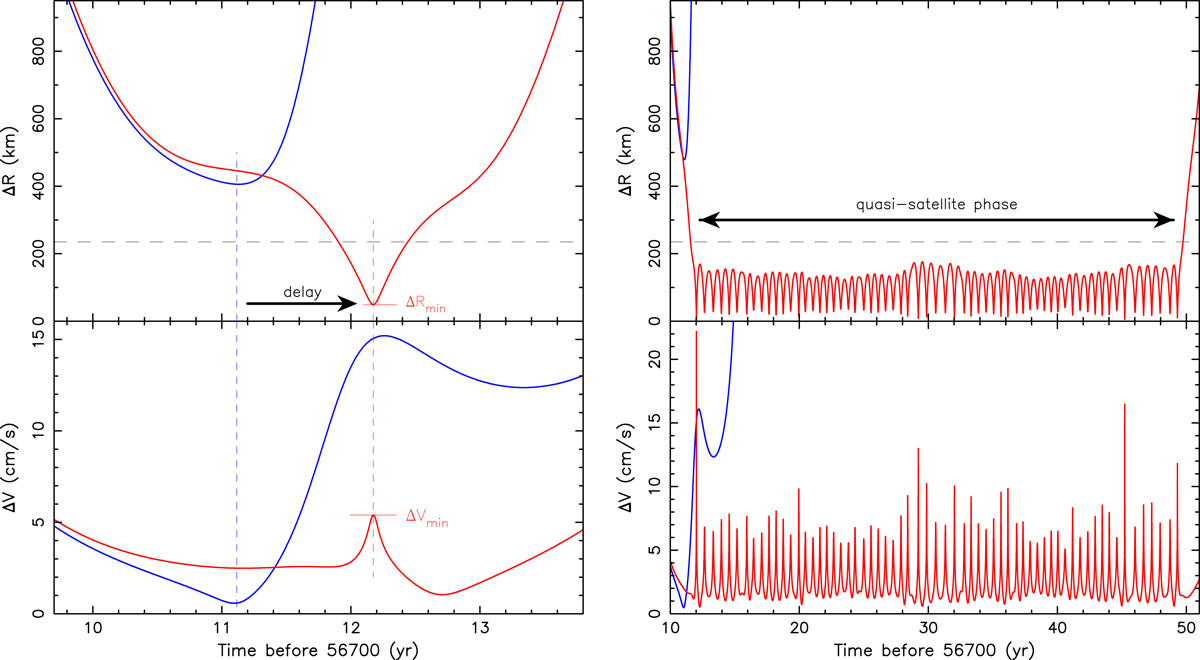Fig. 1.

Download original image
Two examples of convergence for (458271) 2010 UM26 and 2010 RN221 orbits. The top panels show the mutual distance of the two asteroids, and the bottom panels show their relative velocity. The abscissa is the time prior to initial conditions of the simulation at MJD 56700.0 (February 12, 2014). Each simulation was run twice, with (red line) and without (blue line) the mutual gravitational attraction of the components in the pair. The dashed gray line in the top panels indicates the estimated radius of the Hill sphere of the parent body. The left panels show a simple close encounter at a minimum distance of ≃45 km distance. The relative orbit at the closest encounter is an almost parabolic flyby that dove well into the Hill sphere. This effect would have been missed if we had not accounted for the mutual gravitational attraction of the asteroids. The right panels show a more complex evolution when the two asteroids were temporarily captured into a quasi-satellite configuration for nearly 40 years. The orbital eccentricity during the quasi-satellite phase is high; the apocenter reaches beyond half of the Hill radius.
Current usage metrics show cumulative count of Article Views (full-text article views including HTML views, PDF and ePub downloads, according to the available data) and Abstracts Views on Vision4Press platform.
Data correspond to usage on the plateform after 2015. The current usage metrics is available 48-96 hours after online publication and is updated daily on week days.
Initial download of the metrics may take a while.


